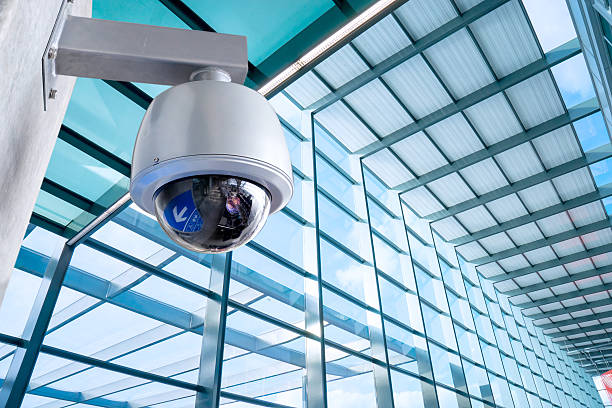Introduction to Data Analytics Course and Its Importance in Traffic Management
With the world becoming more interconnected, there has been a rapid growth in the volume of data being generated. This data holds valuable information that can be utilized to enhance different aspects of our daily lives, such as traffic management. In this piece, we will delve into the significance of data analytics in traffic management, specifically examining a case study involving the Mumbai Traffic Police. Through the strategic placement of cameras guided by data analysis, the Mumbai Traffic Police have achieved notable improvements in the flow of traffic within the city.
The Role of Data Analytics in Traffic Management – Case Study of Mumbai Traffic Police
Mumbai, India’s financial hub, is renowned for its congested streets and copious amounts of traffic. Keeping millions of cars on the road every day makes it difficult to manage traffic effectively. Here’s when data analytics become useful. The Mumbai Traffic Police has successfully incorporated data analytics into their traffic management strategy after realizing its potential.
Understanding the Traffic Situation in Mumbai and the Need for Strategic Camera Placement
Before diving into the specifics of how the Mumbai Traffic Police strategically places cameras, it is important to understand the traffic situation in the city. Mumbai experiences heavy traffic congestion, especially during peak hours, leading to delays, frustration, and even accidents. To tackle this problem, the Mumbai Traffic Police needed a data-driven approach that would enable them to make informed decisions about where to place cameras for maximum impact.
Factors Considered in Strategic Camera Placement for Smooth Traffic Flow
When it comes to strategically placing cameras for smooth traffic flow, the Mumbai Traffic Police takes into account several factors. Firstly, they analyze historical traffic data to identify congested areas and traffic patterns. This helps them determine where the majority of traffic violations occur and where accidents are most likely to happen. By focusing on these areas, they can effectively monitor traffic and deter potential offenders.
Another factor considered is the infrastructure of the city. Mumbai has a complex road network with various intersections, flyovers, and underpasses. The Mumbai Traffic Police strategically places cameras at key points such as major intersections and bottlenecks to ensure better traffic management. By monitoring these critical points, they can take immediate action when traffic starts to build up or accidents occur.
Benefits of Using Data Analytics in Traffic Management
The benefits of using data analytics in traffic management are numerous. Firstly, it allows for proactive decision-making. By analyzing traffic data in real time, the Mumbai Traffic Police can identify potential bottlenecks and take preventive measures before they lead to congestion. This proactive approach helps in maintaining a smooth flow of traffic.
Secondly, data analytics enables efficient resource allocation. By accurately predicting traffic patterns and identifying areas of high congestion, the Mumbai Traffic Police can allocate their resources, such as personnel and vehicles, more effectively. This ensures that they are present where they are needed the most, resulting in better traffic management.
The Process of Data Collection and Analysis for Strategic Camera Placement
The Mumbai Traffic Police uses a methodical procedure for gathering and analyzing data to put cameras in critical locations. They gather information from several sources, such as CCTV cameras, mobile traffic tracking apps, and traffic sensors. To find patterns and trends, this data is then aggregated and subjected to sophisticated data analytics tools.
The Mumbai Traffic Police can determine which locations need more surveillance after the data has been analyzed. At certain points, they purposefully install cameras to monitor traffic and make sure that the laws are being followed. They can maximize their resources and concentrate on regions where they can have the biggest influence on traffic flow thanks to this data-driven approach..
The Impact of Strategic Camera Placement on Traffic Flow in Mumbai
The Mumbai Traffic Police’s strategic camera placement has had a profound effect on traffic movement within the city. Through vigilant traffic monitoring and enforcement of traffic regulations, they have successfully alleviated congestion and enhanced the overall vehicular flow. As a result, commuters now experience reduced travel times, while road safety has been significantly improved with a decrease in the occurrence of accidents.
The Role of Data Analysts in Traffic Management and Their Skills
An essential part of traffic management is played by data analysts. They are in charge of gathering, processing, and deciphering vast volumes of data in order to derive important insights. Data analysts play a crucial role in the Mumbai Traffic Police’s ability to recognize traffic trends, forecast traffic, and suggest the best locations for cameras.
A certain set of abilities is necessary for data analysts to succeed in the field of traffic management. These include being skilled in statistical modeling and forecasting, adept at gathering and analyzing data, and capable of effectively conveying findings to stakeholders. To fully utilize data analytics technology in traffic management, data analysts must also keep up with the most recent developments in the field.
The Importance of Data Analytics Courses in Mumbai for Aspiring Data Analysts
Data analytics course in Mumbai, pursuing data analytics courses is of utmost importance. These classes offer a strong basis in data analytics techniques, tools, and methodologies. They equip students with the necessary skills to collect, analyze, and interpret data effectively. By enrolling in a data analytics course in Mumbai, aspiring data analysts can gain practical knowledge and hands-on experience in the field.
Furthermore, data analytics courses in Mumbai often provide networking opportunities and industry connections. This can be invaluable for aspiring data analysts as it allows them to learn from experienced professionals and potentially secure internships or job placements in the industry. By investing in their education and acquiring the right skills, aspiring data analyst course can position themselves for a successful career in traffic management and other data-driven fields.
Conclusion and the Future of Data Analytics in Traffic Management
In conclusion, the utilization of data analytics has proven to be an effective tool in the realm of traffic management. This has been exemplified through the strategic implementation of surveillance cameras by the Mumbai Traffic Police. By harnessing the power of data analysis, they have successfully optimized the flow of traffic, alleviated congestion, and improved overall road safety. Looking ahead, the importance of data analytics in traffic management is poised to expand even further. With continuous technological advancements and the increasing abundance of data, there is immense potential for enhancing traffic management through data analytics. Cities worldwide need to embrace data-driven approaches, similar to the one adopted by the Mumbai Traffic Police, to fully unlock the advantages that data analytics can offer to traffic management.
Business name: ExcelR- Data Science, Data Analytics, Business Analytics Course Training Mumbai
Address: 304, 3rd Floor, Pratibha Building. Three Petrol pump, Lal Bahadur Shastri Rd, opposite Manas Tower, Pakhdi, Thane West, Thane, Maharashtra 400602
Phone: 09108238354,
Email: [email protected]

